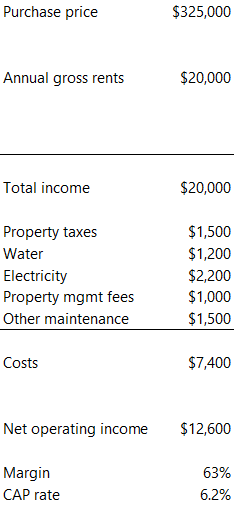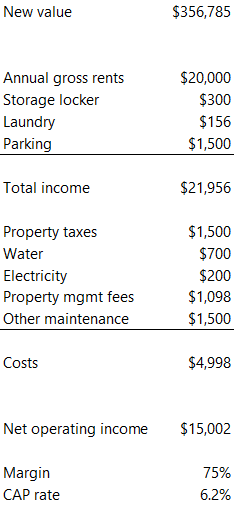Find hidden dollars where others don't look

The margin on warranties on electronics can be 80%+. The margin on the chocolate bar at the grocery store register is 25%+. The margin on the extra controller for your gaming system is 50%+.
What do they all have in common? They're an extra purchase on top of the main thing you bought. And they're all high margin.
The same can apply to your properties. Find high margin add-ons that tenants willingly pay for. Just like you paid for that bar of chocolate. The bonus with real estate is that these add-ons are recurring. Once tenants have got used to them, they're highly unlikely to give them up. Bonus: the add-ons increase the value of your rental property.
Extra sources of rental income include parking, laundry, storage, utilities, basement bedroom, internet/cable. These add disproportionate property value because of the margin.
Every state or city might have rules on what must be included in the rent. Be legal and ethical. Beyond that, it's fair game.
There are three question to ask yourself about each possible 'add-on':
- How much can I realistically charge per month?
- How likely is it that the tenant will pay extra for it?
- How easy is it to make it happen?
Add-ons depend on your local market. If everyone charges parking, you can charge for parking. If water is usually included, you'll have to include it too.
Make an assessment of hidden dollar sources of income for every property you have or are considering.
Hidden sources of extra income

When you get the proforma (a fancy word for 'expected revenue and costs') from the seller you'll notice a couple of things.
First: the seller may well 'juice' the future income potential. The seller may use phrases like "currently under market rates". Make your own honest appraisal of how true this is.
Second: the seller may not include some of these hidden sources of income. The seller probably hasn't thought of them. Or hasn't had the time to put them in place. Make your own judgement.
In both cases a good property manager can add a ton of value here. They can give you a reality check on both the points above. It's central to their job. Again, if you're buying and renting through one property manager, they're incentivized to be realistic. If they say it'll cost $200 to install a storage locker that you can charge $25 a month for, ask them how confident they are.
Let's work through an example.

Let's say you buy a place for $325,000 and rent it out for $20,000 per year. Before financing (mortgage) costs, your net operating income and expenses might look like this.
Margin isn't a standard real estate term. For the purposes of this, it is the net operating income divided by the total income.
A 6.2% CAP rate (reminder: total income divided by purchase price) is pretty run-of-the-mill.
Now take that same property and:
- Charge $125 per month for parking
- Charge $25 per month for a storage locker
- Charge $1.50 per laundry load twice per week
- Separately meter water and electricity so tenants pay their own utilities and you cover common areas (hallways, laundry room) only
Things just became more interesting. Your income went up by $2,000 per year. Your costs went down. Which means your net operating income went up by $3,000 per year.
Your margin is now up from 63% to 75%. And - most impressively - you've added over $30,000 in value to the property. At least.
Wait. What?

Assume a 6.2% CAP rate is standard for this kind of property in this kind of area. Not unreasonable since that's what you paid for it. To calculate the new value of the property rearrange the CAP rate equation: $21,956 / 6.2% = $356,785. That's an extra $30,000 in value. And it's at higher margin (75% vs 63%) meaning you might juice the $30,000 even more.
That's how to add more income revenue, more profit, and more value to your property.
